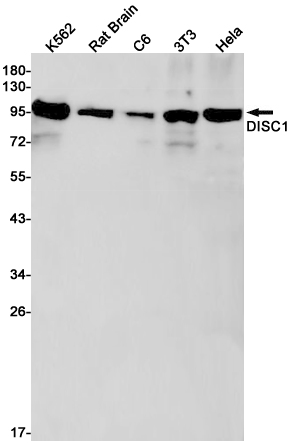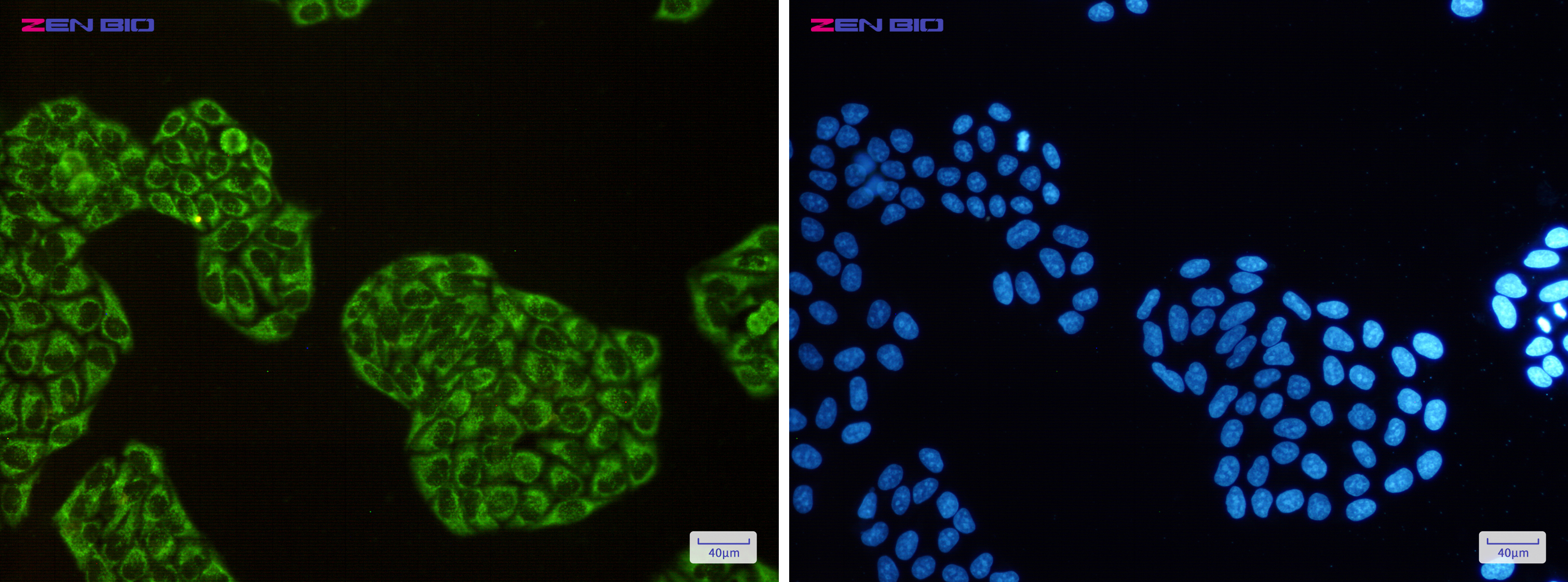-
Product Name
Anti-DISC1 Rabbit antibody
- Documents
-
Description
DISC1 Rabbit polyclonal antibody
-
Tested applications
WB, IHC-P, ICC/IF, FC, IP
-
Species reactivity
Human, Mouse, Rat
-
Alternative names
SCZD9; C1orf136 antibody
-
Isotype
Rabbit IgG
-
Preparation
Antigen: Recombinant protein of human DISC1
-
Clonality
Polyclonal
-
Formulation
Supplied in 50nM Tris-Glycine(pH 7.4), 0.15M Nacl, 40%Glycerol, 0.01% sodium azide and 0.05% BSA.
-
Storage instructions
Store at -20°C. Stable for 12 months from date of receipt.
-
Applications
WB: 1/1000
IHC: 1/20-1/100
ICC/IF: 1/200
FC: 1/200
IP: 1/20
-
Validations

Western blot detection of DISC1 in K562,Rat Brain,C6,3T3,Hela cell lysates using DISC1 Rabbit pAb(1:1000 diluted).Predicted band size:94kDa.Observed band size:94kDa.

Immunocytochemistry of DISC1(green) in Hela cells using DISC1 Rabbit pAb at dilution 1/50, and DAPI(blue)
-
Background
Swiss-Prot Acc.Q9NRI5.Involved in the regulation of multiple aspects of embryonic and adult neurogenesis. Required for neural progenitor proliferation in the ventrical/subventrical zone during embryonic brain development and in the adult dentate gyrus of the hippocampus. Participates in the Wnt-mediated neural progenitor proliferation as a positive regulator by modulating GSK3B activity and CTNNB1 abundance. Plays a role as a modulator of the AKT-mTOR signaling pathway controlling the tempo of the process of newborn neurons integration during adult neurogenesis, including neuron positioning, dendritic development and synapse formation. Inhibits the activation of AKT-mTOR signaling upon interaction with CCDC88A. Regulates the migration of early-born granule cell precursors toward the dentate gyrus during the hippocampal development. Plays a role, together with PCNT, in the microtubule network formation.
Related Products / Services
Please note: All products are "FOR RESEARCH USE ONLY AND ARE NOT INTENDED FOR DIAGNOSTIC OR THERAPEUTIC USE"
